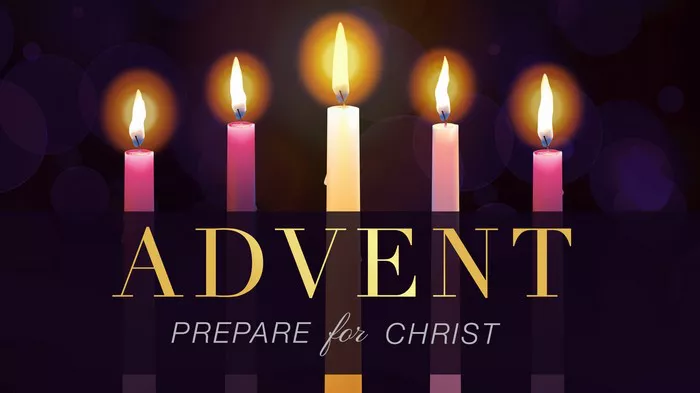As the days grow shorter and the air turns crisp, the Christian world begins its annual journey through the season of Advent. This period, which typically spans the four weeks leading up to Christmas, holds profound significance for believers around the globe. It is a time of reflection, anticipation, and preparation as Christians eagerly await the celebration of the birth of Jesus Christ. But what exactly is the season of Advent about, and why is it such a cherished tradition in the Christian calendar? In this article, we delve into the rich tapestry of Advent, exploring its history, themes, and practices.
The Origins of Advent: Tracing its Roots
The word “Advent” is derived from the Latin word “adventus,” meaning “coming” or “arrival.” It has its roots in the early Christian church, with references to a period of preparation for the celebration of Christ’s birth dating back as early as the 4th century. However, the observance of Advent in its current form began to take shape in the medieval period, evolving over time into the liturgical season we recognize today.
The Symbolism of the Advent Wreath: Lighting the Way
One of the most iconic symbols of Advent is the Advent wreath. Typically made of evergreen branches, the wreath is adorned with four candles, each representing a different aspect of the Advent journey. As the weeks progress, these candles are lit one by one, illuminating the path towards Christmas.
The first candle, often called the “Prophet’s Candle” or the “Candle of Hope,” symbolizes the anticipation of the Messiah’s coming, echoing the hope expressed by the prophets of the Old Testament. The second candle, known as the “Bethlehem Candle” or the “Candle of Preparation,” represents the preparation and readiness of God’s people to receive their Savior. The third candle, often referred to as the “Shepherd’s Candle” or the “Candle of Joy,” signifies the joy that accompanies the Good News of Christ’s imminent birth. Finally, the fourth candle, the “Angel’s Candle” or the “Candle of Love,” celebrates the love of God made manifest in the incarnation of Jesus Christ.
The Advent Calendar: A Daily Reminder of Expectation
In addition to the Advent wreath, another popular tradition associated with the season is the Advent calendar. Originating in 19th century Germany, the Advent calendar is a special calendar used to count down the days until Christmas. Each day leading up to Christmas, a door or window on the calendar is opened to reveal a small treat or a religious image, serving as a daily reminder of the anticipation and excitement of the season.
The Liturgical Colors of Advent: Deepening the Experience
Throughout the season of Advent, the liturgical colors used in churches reflect the themes of the season. Purple, a color traditionally associated with penitence and preparation, is often used during the first and second weeks of Advent, symbolizing the need for repentance and spiritual readiness. In some traditions, a deep shade of blue is also used, representing hope and expectation. On the third Sunday of Advent, known as Gaudete Sunday, the color shifts to rose or pink, signifying joy and celebration amidst the anticipation. Finally, on Christmas Eve, the color changes once again to white or gold, symbolizing the purity, light, and glory of the Christ child.
The Advent Fast: Nourishing the Soul
In addition to these outward symbols and practices, many Christians choose to observe a period of fasting or spiritual discipline during Advent. Modeled after the Lenten fast, this practice is intended to foster a spirit of self-examination, repentance, and anticipation in preparation for the coming of Christ. Some may choose to abstain from certain foods or activities, while others may incorporate additional times of prayer, Scripture reading, or acts of service into their daily routines.
The Themes of Advent: Reflecting on the Journey
At its core, Advent is a season of profound spiritual significance, marked by a series of interwoven themes that guide believers through the journey towards Christmas.
Hope: The season of Advent begins with a message of hope—a hope rooted in the promises of God and the anticipation of the fulfillment of those promises in the birth of Jesus Christ. As believers light the first candle of the Advent wreath, they are reminded of the hope that sustains them through the darkest of times.
Preparation: As the season progresses, the focus shifts to preparation—preparation of heart, mind, and spirit to receive the gift of Christ into the world anew. This preparation involves both introspection and action, as believers examine their lives in light of the coming of Christ and make ready their hearts to welcome him.
Joy: Despite the challenges and uncertainties of life, Advent is a season of joy—a joy rooted not in temporary circumstances, but in the eternal hope found in Christ. As believers light the third candle of the Advent wreath, they rejoice in the Good News of Christ’s imminent arrival and the promise of salvation he brings.
Love: Finally, Advent is a season of love—a love made manifest in the incarnation of Jesus Christ, who came into the world out of love for humanity. As believers light the fourth candle of the Advent wreath, they celebrate the boundless love of God, which knows no bounds and extends to all people.
Conclusion
In conclusion, the season of Advent holds deep significance for Christians around the world as a time of reflection, anticipation, and preparation for the celebration of Christ’s birth. Through symbols such as the Advent wreath, practices such as fasting and prayer, and the exploration of themes such as hope, preparation, joy, and love, believers are invited to embark on a journey of spiritual renewal and transformation. As we journey through the season of Advent, may we be reminded of the profound truth that Emmanuel—God with us—is indeed coming, and may our hearts be open to receive him with joy and thanksgiving.

